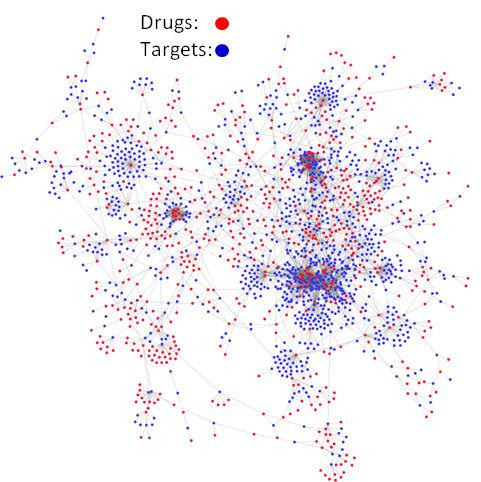Balestra predicts drug-target interactions. However the latent factor model that powers Balestra can also be used to query for target-target similarity. This is achieved by computing the distance between the latent variable (LV) vectors corresponding to different targets. The LV similarity between two targets represents the similarity between the interaction profiles of these two targets. Therefore the targets with similar interaction profiles have score high and vice versa.
Balestra can give the targets that are most similar to a query. This is achieved by providing only one target name. Alternatively, the user can query for the similarity between a target-target pair by simply providing the name of the second target in the specified box.
Built by: Murat Can Cobanoglu.
Designed by: MC Cobanoglu, ZN Oltvai, DL Taylor, I Bahar.
Supported by:
- Bahar Lab at the
University of Pittsburgh School of Medicine,
Dept of Computational and Systems Biology - University of Pittsburgh Drug Discovery Institute,
Citation: MC Cobanoglu, C Liu, F Hu, ZN Oltvai, I Bahar. (2013) J Chem Inf Model 53, 3399-3409.
Funding: Support for BalestraWeb development is provided by NIH awards U19 AI068021 and P01 DK096990.
Copyright © 2013-2014, University of Pittsburgh
Privacy Policy: The BalestraWeb site does not store any personally identifiable information about site visitors. The only information stored by the site is the IP address or hostname from which the site was accessed, a list of files accessed and any commands/data passed to the web application. This information is for internal use only and will never be shared with others. The BalestraWeb site does not use cookies. Nor does the site access any cookies that are stored in your browser.
